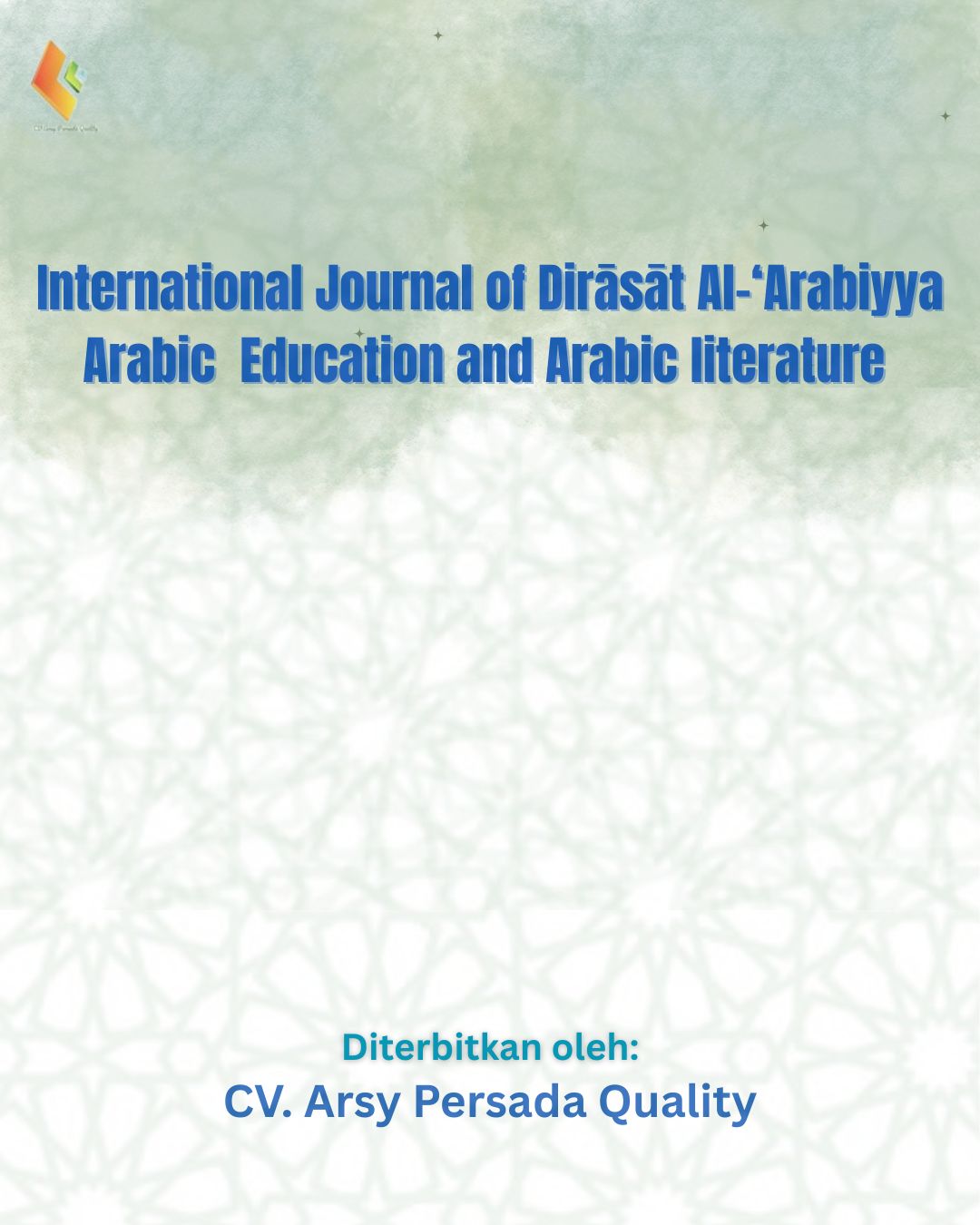LEARNING VARIOUS IDIOMS FOR ARABIC LANGUAGE TRANSLATORS
Keywords:
Learning Idioms, Arabic Language TranslatorAbstract
Idioms are structural patterns that deviate from common language rules and are usually in the form of phrases, while their meanings cannot be explained logically or grammatically, relying on the meaning of the words that form them. However, the meaning of idioms can be understood as a whole through the feeling of the ability to translate Arabic texts into the target language. The purpose of writing this variety of idioms for Arabic translators in general is to understand Arabic language patterns and minimize someone's mistakes in translating Arabic, while the specific purpose is to describe the accuracy in translating Arabic naturally and objectively. There are many varieties of idioms, very interesting to study critically, phenomenologically including Idioms in Arabic can be formed from isim sentences, fi'il sentences, or letter sentences. These sentences are what make idioms in Arabic more interesting. Based on these sentences, the forms of idioms will appear. Some Arabic idioms are formed from one, two words, and some are three words or even more. The results of this journal on learning about various idioms are considered important to read, especially for Arabic translators, because this journal was written to make it easier for Arabic translators to translate Arabic into Indonesian well and objectively
References
Abdul Chaer, General Linguistics Revised Edition, Fourth Edition (Jakarta: Rineka Cipta: 2012),
Abdul Chaer, General Linguistics Revised Edition, Fourth Edition,
Abdul Chaer, Introduction to Indonesian Semantics (Jakarta: Rineka Cipta: 2013),
Abu Sa'ad, A. (1987) Mŭkjām Al-Tarākīb Wa Al-Ibārāt Al- Istilāhiyya Al- Āmiyya Al-Qadīm Minhā Wa Al-Mŭwallād. Bayrut. Dār Al-Ilm L'Al-Malāyīn,
Achmad HP. And Alek Abdullah, General Linguistics, (Jakarta: Erlangga. 2012)
Agus Suryana, Practical Guide to Managing Training, (Jakarta: Edsa Mahkota, 2006),
Ahmad Izzan, Arabic Language Learning Methodology, Cet.IV, (Bandung: Humaniora, 2011,
Ahmad Mukhtar Umar, Ad-Dalalah Science Cet. Fifth (Qohiroh: Polar Science: 1998), 33
Baiq Tuhfatul Unsi, Like the Isthilahiyah of Tafaqquh Journal; Vol. 1 No. 1, May 2013
Fatimah Djajasudarma, Semantics 2- Understanding the Science of Meaning (Bandung: PT. Refika Aditama: 2012),
JWM Verhaar, Principles of General Linguistics, Seventh Edition (Yogyakarta: Gadjah Mada University Press: 2010),
Jos D Parera, Educational Linguistics, (Jakarta: Erlangga 1997),
Kam Chuin Aik And Kam Kai Hui, Longman Dictionary Of Grammar And Ussage Second Ed. (Singapore: Edisson Wesley Longman Singapore: 1999),
Larson, ML Meaning-Based Translation: A Guide To Cross-Language Equivalence (Lanham MD: University Press Of America, 1984),
Larson, ML Meaning-Based Translation: A Guide To Cross-Language Equivalence,
See: Abdul Chaer, Introduction to Indonesian Semantics (Jakarta; PT Asdi Mahasatya, 2009),
M. Rudolf Nababan, 1999, Theory of Translating English, Yogyakarta: Pustaka Pelajar,
Mansoer Pateda, Lexical Semantics, Second Edition (Jakarta: Rineka Cipta: 2010),
Muhammad Luqman Ibnul Hakim et al, Phenomenon Between Idioms and Collocations: An Analysis of Translation Structure and Meaning Journal of Linguistics Vol. 19(2) Dec.2015 (010-023),
Muhammad Luqman Ibnul Hakim et al, Phenomenon Between Idioms and Collocations: An Analysis of Translation Structure and Meaning Journal of Linguistics Vol. 19(2) Dec.2015 (010-023),
Muhandis Az-Zuhri, Musoffa Basyir, and Muhammad Jaeni, Op.Cit.,
Oemar Hamalik, Curriculum and Learning, (Jakarta: Bumi Aksara, 1995),
Rofi'i, Tt, Dalil Fi Al-Tarjamah (Arabic Tarjamah Guidance), Yogyakarta: Library,
Shakkour, J. (1992). Kitāb Al-Bayān (In Arabic). Beirut: Daar Al-Fikr Al-Lubnanii,
Umi Nurul Fatimah, Arabic Idioms: Grammatical and Semantic Review, Arabic Language Education Thesis, Semarang State University,



